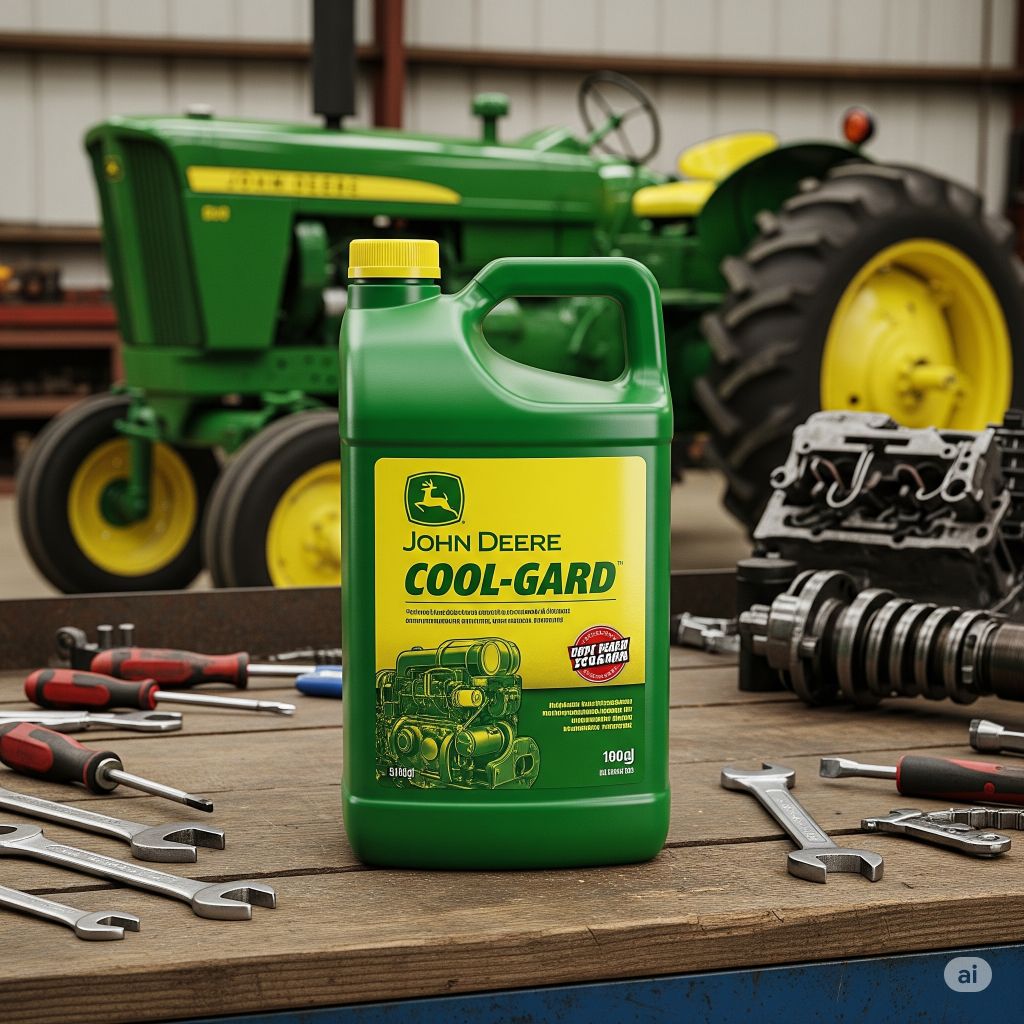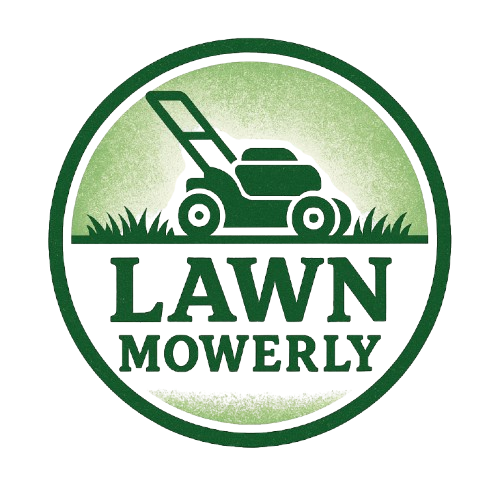
Here’s a comprehensive guide on John Deere Cool‑Gard coolant, covering its features, benefits and drawbacks, compatible alternatives, maintenance best practices, and an extensive FAQ section. Detailed technical content is supported with citations.
🧪 What Is Cool‑Gard / Cool‑Gard II?
John Deere Cool‑Gard (and its updated version Cool‑Gard II) is a heavy‑duty engine coolant formulated specifically for agricultural and diesel equipment. It comes in two versions: pre‑mix (50/50 with de‑mineralized water, ready to use) and concentrate (requires mixing).
Key features include:
- 6‑year or 6,000‑hour service life, reducing change‑out frequency (westrac.bz).
- Protection against corrosion in metals like aluminum, copper, brass, and cast iron.
- Anti‑cavitation additives to prevent cylinder liner erosion common in diesel engines.
- Low‑foaming formulation to maximize heat transfer and minimize overheating risk.
- Contains a bittering agent (Bitrex®) to discourage ingestion
These properties make it a fully formulated product requiring no supplemental additives on initial fill.
✅ Pros & Cons of Cool‑Gard II
Advantages
- Long service intervals, up to 6 years or 6,000 hrs.
- Balanced chemistry suitable for modern diesel engines with EGR systems.
- Reduces cavitation risk, extends water-pump life, minimizes scale buildup.
- Compatible with a variety of metals and sealing materials used by John Deere
- No additional SCA (supplemental coolant additives) needed at first fill.
- Ready-to-use pre‑mix version simplifies application and eliminates mixing errors.
Drawbacks
- OEM-specific, can be more expensive or harder to source than aftermarket coolants.
- Mixing with conventional or incompatible antifreeze (e.g. IAT green) may dilute its performance
- Limits flexibility if mixed improperly with other brands—not mixing with dissimilar chemistries is strongly advised.
- Weakness against long-term cavitation only if diluted or contaminated improperly.
3 Compatible Cool-Gard Alternatives
If Cool‑Gard II is unavailable, several high-quality heavy-duty extended-life coolants offer comparable protection. Recommended options include:
Top Coolant Alternatives to John Deere Cool-Gard II
1. Cummins Fleetguard ES Compleat (OAT/NOAT)
A leading choice for diesel engines, Fleetguard coolants are engineered to meet or exceed Cool-Gard II specs. Look for versions like:
- ES Compleat OAT – Long service intervals, no SCA required
- ES Compleat NOAT – Nitrited for added cylinder liner protection
Key Benefits:
- Compatible with wet-sleeve engines
- Up to 1 million miles or 20,000 hours with extender
- Works well across mixed equipment fleets
2. Valvoline Zerex G-05 or Zerex Heavy Duty Extended Life
Valvoline’s Zerex G-05 is a hybrid OAT (HOAT) formula used in many diesel applications.
- Zerex G-05: HOAT with nitrite for extra protection
- Zerex ELC: Full OAT, phosphate-free, long-life coolant
Why It’s a Good Alternative:
- Trusted in both on-road and off-road equipment
- Meets ASTM and OEM standards
- Widely available
3. Texaco Delo ELC / Extended Life Coolant
Texaco offers multiple heavy-duty coolants, with Delo ELC being a common substitute.
Features:
- Extended service life of 750,000 miles or 1.2 million km
- OAT chemistry with no supplemental coolant additives required
- Low maintenance, high protection
4. Shell Rotella ELC / ShellZone OAT Coolants
Shell’s Rotella and ShellZone lines offer ELC-grade OAT coolants compatible with diesel machinery.
Why Choose Shell:
- Meets or exceeds ASTM D6210
- Phosphate-free, silicate-free formulation
- Effective for high-load, high-temp environments
5. Chevron Delo ELC Advanced
Chevron’s Delo series is another strong match, particularly:
- Delo ELC Advanced Protection Coolant
- Nitrite-free or NOAT variants available
Compatibility:
- Suited for heavy-duty, off-road diesel applications like John Deere
- Long drain intervals, high cavitation protection
6. Zerex G‑05 Antifreeze/Coolant
- HOAT (Hybrid Organic Acid Technology) similar to Cool‑Gard II.
- Protects against liner cavitation, corrosion, and scaling.
- Offers freeze protection to –34°F and boilover resistance to 265 °F.
- Field-proven in heavy-duty and diesel applications.
7. Peak Global Extended Life Coolant
- Silicate-/phosphate-free, long service life.
- Compatible with JD systems and offers strong engine corrosion protection.
- Affordable alternative used by many JD operators .
8. Other viable options:
- Prestone Dex‑Cool, Havoline GHC Pre‑Mix, Sierra Antifreeze, Triax All Fleet ELC, Fleetguard EC‑1/EC360—all meeting similar specifications for corrosion control and liner protection (Yard Floor).
⚠️ Mixing and Compatibility Considerations
Mixing Rules:
- JD Cool‑Gard II is compatible with other diesel heavy-duty coolants like Cat ELC, Cummins ES Complete—but Do Not Mix with typical automotive green or silicate-based IAT coolants, as it compromises cavitation protection (Bob Is The Oil Guy).
- Always flush and fill system thoroughly if switching chemistries.
- Use distilled or low-mineral water when diluting concentrate formulations to prevent scale and corrosion .
Reddit-based rider feedback:
“Do not add non‑OAT coolant to the cooling system. It will turn to gel.”
Mixing automotive coolants with OAT/HOAT formulas can cause gel formation, reducing cooling effectiveness.
Avoid blending different additive technologies unless thoroughly flushed out.
Maintenance & Best Practices
- Replace coolant every 6 years or 6,000 hours, whichever comes first.
- Use only JD spec coolant or approved equivalent from start—don’t mix with automotive antifreeze.
- Always mix concentrate with clean distilled/de‑mineralized water in correct ratio (50/50).
- Flush completely if switching brands or base chemistries.
- Monitor cooling system performance—check for foaming, odours, overheating, or discoloration.
- Use only JD-labeled or spec-equivalent products for warranty compliance and component protection.
- Test coolant quality annually with hydrometers or test strips to ensure inhibitor levels remain sufficient.
Related FAQ’ s
Q1: What protects Cool‑Gard II provides over generic antifreeze?
It offers liner cavitation protection crucial in diesel engines, plus anti-corrosion, anti-scaling, and low-foaming chemistry for agriculture equipment reliability.
Q2: Can I use automotive coolant in John Deere tractors?
JD strongly does not recommend automotive coolants—they lack cavitation inhibitors essential in diesel systems. Mixing reduces performance and may void warranties.
Q3: Is Cool‑Gard II compatible with all John Deere equipment?
Yes—designed for light‑ and heavy‑duty JD machines. Previous Cool‑Gard and Cool‑Gard II are backward compatible; JD advises against mixing generations unless system is clean.
Q4: Can I mix Cool‑Gard concentrate with tap water?
No—always use distilled or low-mineral water, as mineral deposits impair cooling system longevity and inhibitor performance.
Q5: How long can JD coolant actually last?
Manufacturer rating is 6 years or 6,000 hours. Under extreme conditions, annual testing is prudent to determine if an earlier change is needed.
Q6: Are alternatives like Zerex G-05 or Rotella ELC safe to use?
Yes—if they are formulated for HOAT/NiTrite-free diesel applications and meet similar specs for corrosion and cavitation protection, they are considered safe substitutes.
Q7: Can I top off with any color coolant?
No—matching coolant chemistry is crucial. Mixing different base chemistries (e.g., silicate-based green with HOAT red) can cause gel and performance issues.
Q8: What if I use an unknown or “universal” coolant?
Most reddit users and mechanics warn against universal substitutes without verifying they meet heavy-duty diesel specs—cheap mixtures may lead to corrosion and clutch/hose degradation.
Q9: Does coolant color matter?
Less so than internal chemistry. Red/orange Cool‑Gard II or equivalent HOAT formulations perform differently than green inorganic or blue OAT. Always choose based on specs, not color alone
Q10: How to safely switch from non-compatible coolant?
Perform a multi-flush, ideally with distilled water until clear, then refill with approved coolant at correct ratio. Never mix incompatible chemistries unless flushed entirely.
7. Summary Table
| Product | Type | Service Life | Cavitation Protection | Notes |
|---|---|---|---|---|
| John Deere Cool‑Gard II | Premix / Conc | 6 yrs / 6,000 h | ✅ Yes | Fully formulated OEM spec |
| Zerex G‑05 HOAT | Premix | ~5 yrs / 150k mi | ✅ Yes | OEM-grade substitute |
| Shell Rotella Ultra ELC | Premix | ~12,000 h | Partial | Excellent heat transfer |
| Peak Extended Life | Premix | ~5 yrs | Partial | Silicate/phosphate‑free option |
| Prestone Dex-Cool / Havoline | Premix | ~5–7 yrs | Partial | Check compatibility per OAT spec |
| Unknown automotive green IAT | Not recommended | — | ❌ No | Causes gel, corrosion risk |
Cool-Gard Compatibility Chart
| Cool-Gard Type | Compatible With | Pre-mixed | Change Interval | Color | Notes |
|---|---|---|---|---|---|
| Cool-Gard II | All John Deere diesel engines | Yes | Up to 6 years/6,000 hrs | Yellow/Gold | Best for high-performance and Tier 4 engines |
| Cool-Gard I | Older John Deere models | Yes/No | Up to 2 years/2,000 hrs | Green | For legacy and non-Tier 4 engines |
| Cool-Gard II PG | Low-tox glycol-based systems | Yes | 6 years/6,000 hrs | Blue | Propylene glycol for environmentally sensitive areas |
✅ Final Thoughts
Stick with Cool‑Gard II or equivalent HOAT diesel coolants to ensure proper protection for John Deere engines. Avoid mixing incompatible color formulas or generic automotive coolant. When properly maintained, Cool‑Gard II delivers long life, corrosion control, and cavitation protection—essential for heavy-duty tractor reliability.

I’m David man behind Lawn Mowerly; I’ve been dealing with lawnmowers and Tractors with my father since I was a kid. I know every make and model and what each one is capable of and love helping people find the perfect equipment for their needs.
